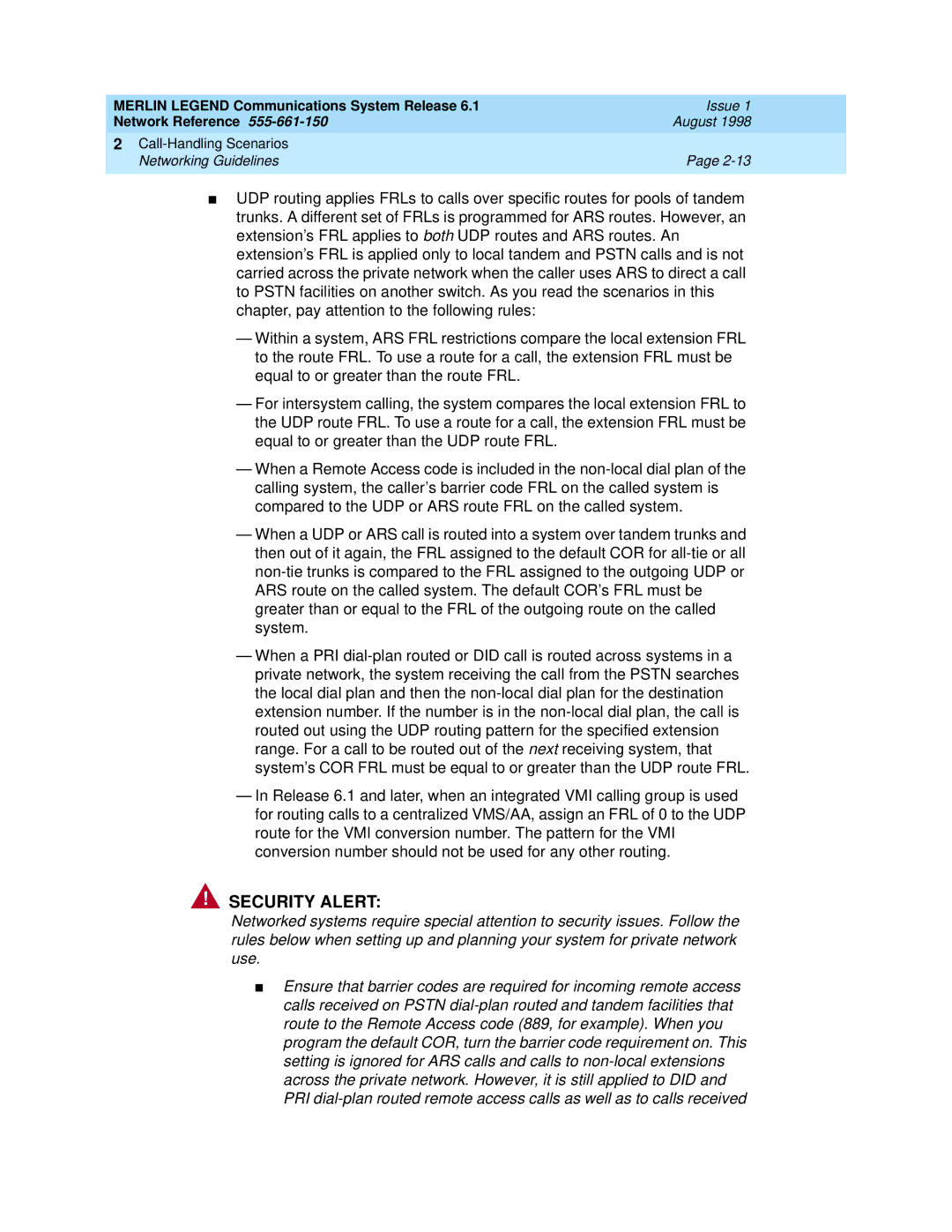
MERLIN LEGEND Communications System Release 6.1 | Issue 1 |
Network Reference | August 1998 |
|
|
2Call-Handling Scenarios
Networking Guidelines | Page |
■UDP routing applies FRLs to calls over specific routes for pools of tandem trunks. A different set of FRLs is programmed for ARS routes. However, an extension’s FRL applies to both UDP routes and ARS routes. An extension’s FRL is applied only to local tandem and PSTN calls and is not carried across the private network when the caller uses ARS to direct a call to PSTN facilities on another switch. As you read the scenarios in this chapter, pay attention to the following rules:
—Within a system, ARS FRL restrictions compare the local extension FRL to the route FRL. To use a route for a call, the extension FRL must be equal to or greater than the route FRL.
—For intersystem calling, the system compares the local extension FRL to the UDP route FRL. To use a route for a call, the extension FRL must be equal to or greater than the UDP route FRL.
—When a Remote Access code is included in the
—When a UDP or ARS call is routed into a system over tandem trunks and then out of it again, the FRL assigned to the default COR for
—When a PRI
—In Release 6.1 and later, when an integrated VMI calling group is used for routing calls to a centralized VMS/AA, assign an FRL of 0 to the UDP route for the VMI conversion number. The pattern for the VMI conversion number should not be used for any other routing.
!SECURITYlALERT:
Networked systems require special attention to security issues. Follow the rules below when setting up and planning your system for private network use.
■Ensure that barrier codes are required for incoming remote access calls received on PSTN
